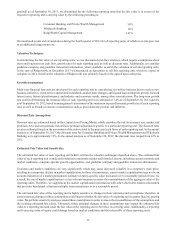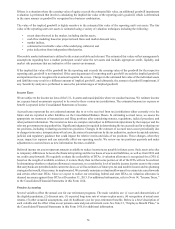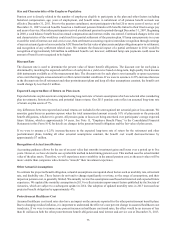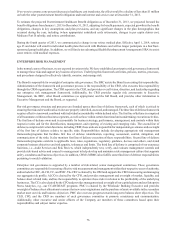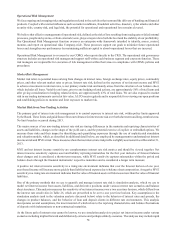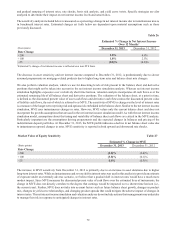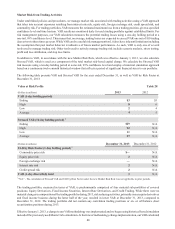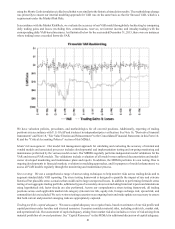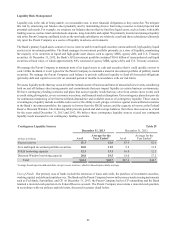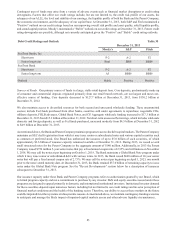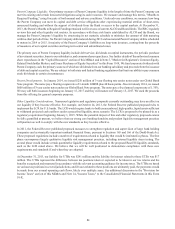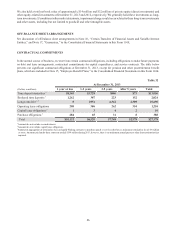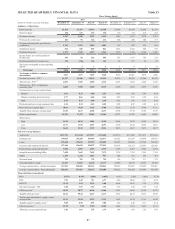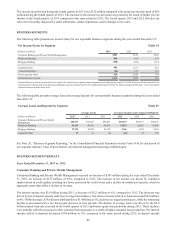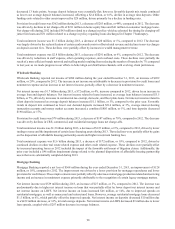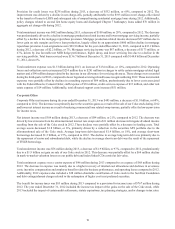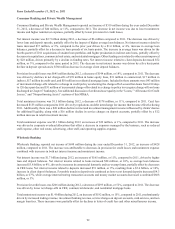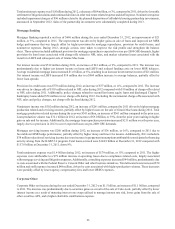SunTrust 2013 Annual Report Download - page 99
Download and view the complete annual report
Please find page 99 of the 2013 SunTrust annual report below. You can navigate through the pages in the report by either clicking on the pages listed below, or by using the keyword search tool below to find specific information within the annual report.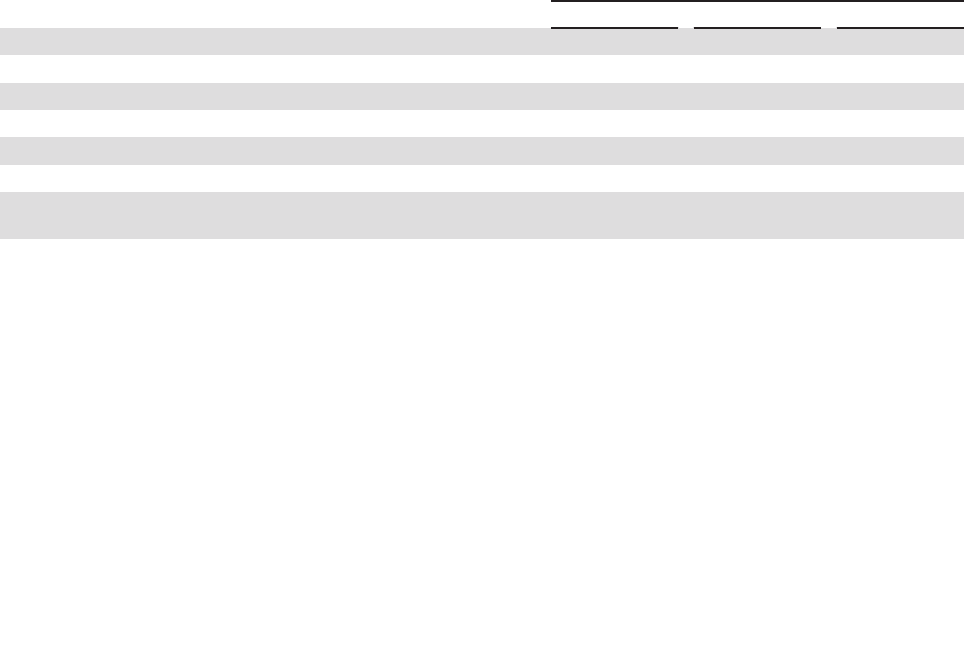
83
Contingent uses of funds may arise from a variety of adverse events such as financial market disruptions or credit rating
downgrades. Factors that affect our credit ratings include, but are not limited to, the credit risk profile of our assets, the
adequacy of our ALLL, the level and stability of our earnings, the liquidity profile of both the Bank and the Parent Company,
the economic environment, and the adequacy of our capital base. At December 31, 2013, both S&P and Fitch maintained a
"Positive" outlook on our credit ratings based on our improving overall risk profile and asset quality, solid liquidity profile,
and sound capital position. Moody’s maintained a “Stable” outlook on our credit ratings at December 31, 2013. Future credit
rating downgrades are possible, although not currently anticipated given the "Positive" and “Stable” credit rating outlooks.
Debt Credit Ratings and Outlook Table 30
December 31, 2013
Moody’s S&P Fitch
SunTrust Banks, Inc.
Short-term P-2 A-2 F2
Senior long-term Baa1 BBB BBB+
SunTrust Bank
Short-term P-2 A-2 F2
Senior long-term A3 BBB+ BBB+
Outlook Stable Positive Positive
Sources of Funds. Our primary source of funds is a large, stable retail deposit base. Core deposits, predominantly made up
of consumer and commercial deposits originated primarily from our retail branch network, are our largest and most cost-
effective source of funding. Core deposits decreased to $127.7 billion at December 31, 2013, from $130.2 billion at
December 31, 2012.
We also maintain access to diversified resources for both secured and unsecured wholesale funding. These uncommitted
sources include Fed funds purchased from other banks, securities sold under agreements to repurchase, negotiable CDs,
offshore deposits, FHLB advances, Global Bank Notes, and CP. Aggregate wholesale funding increased to $17.3 billion at
December 31, 2013 from $15.3 billion at December 31, 2012. Net short-term unsecured borrowings, which includes wholesale
domestic and foreign deposits, as well as Fed funds purchased, increased modestly from $4.5 billion at December 31, 2012
to $4.9 billion at December 31, 2013.
As mentioned above, the Bank and Parent Company maintain programs to access the debt capital markets. The Parent Company
maintains an SEC shelf registration from which it may issue senior or subordinated notes and various capital securities such
as common or preferred stock. Our Board has authorized the issuance of up to $5.0 billion of such securities, of which
approximately $3.6 billion of issuance capacity remained available at December 31, 2013. During 2013, we issued several
small structured notes for the Parent Company in the aggregate amount of $140 million. Additionally, in 2013 the Parent
Company issued $750 million 5-year senior notes that pay a fixed annual coupon rate of 2.35% and will mature on November
1, 2018. We may call the notes at par beginning on October 1, 2018. The Bank maintains a Global Bank Note program under
which it may issue senior or subordinated debt with various terms. In 2013, the Bank issued $600 million of 10-year senior
notes that will pay a fixed annual coupon rate of 2.75%. We may call the notes at par beginning on April 1, 2023, one month
prior to the notes' stated maturity date. At December 31, 2013, the Bank retained $37.0 billion of remaining capacity to issue
notes under the Global Bank Note program. See the "Recent Developments" section below for a description of issuances
subsequent to December 31, 2013.
Our issuance capacity under these Bank and Parent Company programs refers to authorization granted by our Board, which
is formal program capacity and not a commitment to purchase by any investor. Debt and equity securities issued under these
programs are designed to appeal primarily to domestic and international institutional investors. Institutional investor demand
for these securities depends upon numerous factors, including but not limited to our credit ratings and investor perception of
financial market conditions and the health of the banking sector. Therefore, our ability to access these markets in the future
could be impaired for either systemic or idiosyncratic reasons. As mentioned above, we maintain contingency funding scenarios
to anticipate and manage the likely impact of impaired capital markets access and other adverse liquidity circumstances.


